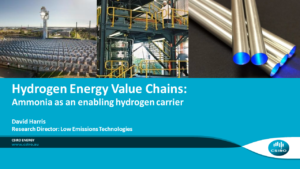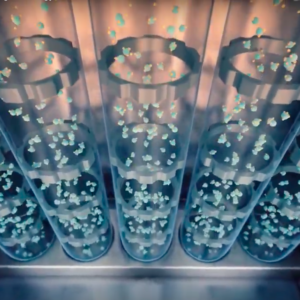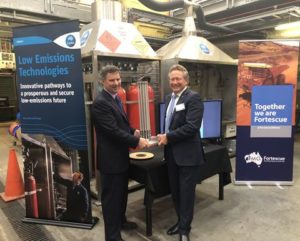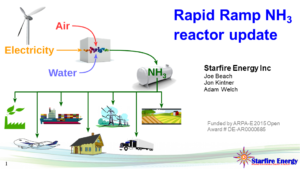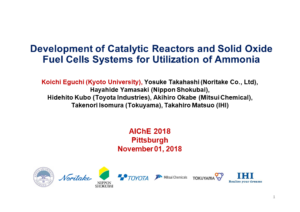Last week, the UK Department for Business, Energy and Industrial Strategy (BEIS) announced a "£390 million government investment to reduce emissions from industry," with a focus on low-carbon hydrogen supply and clean steel production. As part of this investment, a consortium led by Ecuity Consulting that includes Siemens, Engie, and the Science & Technology Facilities Council (STFC), has been awarded £249,000 to perform "valuable research on the role of ammonia in the delivery of low cost bulk hydrogen for use in the UK energy system."
Cracking Ammonia
GenCell A5 update: hydrogen power from ammonia fuel cells ("The Next Big Thing in Energy Production")
GenCell Energy, an Israeli technology company, recently announced a research collaboration with Fraunhofer UMSICHT, a German research institute, that will deliver a "scale-up of the catalyst synthesis process" for cracking ammonia. This will enable GenCell "to produce large quantities of a novel inexpensive catalyst for generation of hydrogen from ammonia."
University of Minnesota demonstrates efficient ammonia dual-fuel engine system
This month, researchers at the University of Minnesota began successful field tests of their new ammonia engine, operating a heavy-duty tractor across farmland near Morris, MN, on a dual-fuel blend of 70% diesel and 30% ammonia.
CSIRO Partner Revealed for NH3-to-H2 Technology
Last week Australia’s Commonwealth Scientific and Industrial Research Organisation (CSIRO) announced the formation of a partnership that will support commercialization of CSIRO’s high-purity ammonia-to-hydrogen conversion technology. Michael Dolan, Principal Research Scientist for the ammonia-to-hydrogen project, had signaled such a development on the occasion of the technology’s first public demonstration in August 2018, saying in a contemporaneous Ammonia Energy post that the identity of “a major industrial partner” would be revealed shortly. The partner turns out to be Fortescue Metals Group (FMG). A November 22 article in Business Insider Australia states that the company will invest “[AUD]$19.1 million [USD$13.8] in technology developed by the CSIRO to make hydrogen vehicles viable in a potential gamechanger for the transport industry.”
Ammonia-to-Hydrogen System for FCEV Refuelling
Rapid Ramp NH3 Prototype Reactor Update
Development of Catalytic Reactors and Solid Oxide Fuel Cells Systems for Utilization of Ammonia


